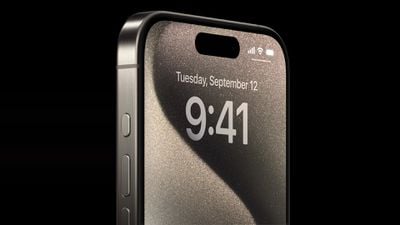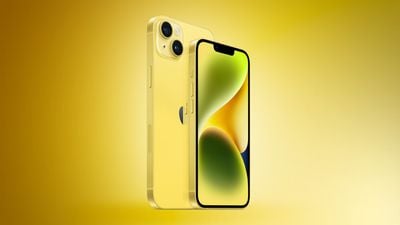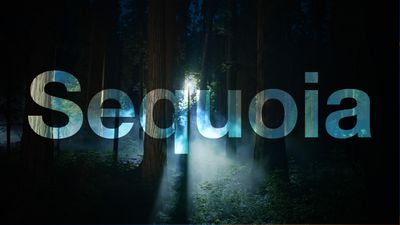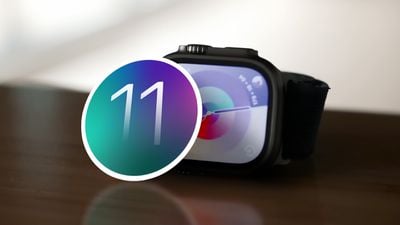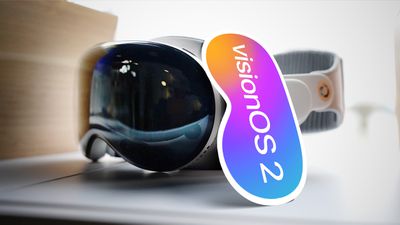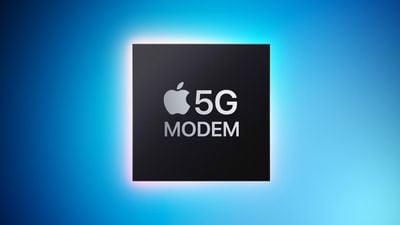Amazon is hosting another Prime Day event this year, called Amazon Prime Big Deal Days and offering shoppers the first chance to save on holiday shopping from a major retailer. Similar to the first Prime Day, it will last for two days (October 8-9) and you can already find a large selection of early deals across Amazon's storefront, covering savings on tech, clothing, video games, groceries, and much, much more.
 Note: MacRumors is an affiliate partner with Amazon. When you click a link and make a purchase, we may receive a small payment, which helps us keep the site running.
Note: MacRumors is an affiliate partner with Amazon. When you click a link and make a purchase, we may receive a small payment, which helps us keep the site running.
For our coverage, we're focusing entirely on Apple and Apple-related discounts that can be purchased during this 48-hour event on Amazon. As of today, this includes deals on AirPods, Apple Watch, iPad, and MacBook Air.
As is typical for Prime Day deals, these markdowns are very time sensitive, so sales listed below may disappear fast, and new ones may appear even faster. With this in mind, we'll keep this article updated throughout the event, and keep an eye on the MacRumors front page as we'll be posting particularly great deals in separate articles this week.
Lastly, and perhaps most importantly, Amazon Prime Big Deal Days requires you to have an Amazon Prime membership to take advantage of the discounts. Amazon Prime offers a one month free trial, and otherwise costs $14.99 per month or $139.00 per year.
AirPods

Starting with AirPods, you'll find a wide selection of solid deals across the AirPods lineup on Amazon during Prime Day. This includes a $10 discount on the new AirPods 4 at $119.00, as well as a low $129.99 price on the AirPods 3.
Apple Watch

SE
Apple's 40mm GPS Apple Watch SE is available for $189.00 today on Amazon, down from $249.00. This is a second-best price on the wearable. This deal is available in all three aluminum color options, and only Amazon has the discount.
You can also get the 44mm GPS Apple Watch SE on sale right now, available for $219.00 on Amazon, down from $279.00. This is another second-best price on the Apple Watch SE for Prime Day.
Ultra 2
Amazon has further discounted the Apple Watch Ultra 2 in Black this week. You can get a few models of the Black Titanium watch for $734.89, down from $799.00. This beats the sale price we tracked last week by about $15, and marks a new all-time low price for the Black Apple Watch Ultra 2.
The models on sale include the Black Titanium Case with Dark Green Alpine Loop (S) and the Black Titanium Case with Dark Green Alpine Loop (M).
M4 iPad Pro

For the newest M4 iPad Pros, Amazon is offering up to $200 off select models of both the 11-inch and 13-inch iPad Pro. Deals are primarily focused on Wi-Fi models, but you can find a few cellular tablets on sale at this time as well.
11-Inch
- 256GB Wi-Fi - $925.00 ($75 off)
- 512GB Wi-Fi - $1,099.00 ($100 off)
- 1TB Wi-Fi - $1,473.00 ($127 off)
- 1TB Wi-Fi with Nano-Texture Glass - $1,589.00 ($110 off)
- 2TB Wi-Fi - $1,842.00 ($156 off)
- 2TB Wi-Fi with Nano-Texture Glass - $1,992.00 ($107 off)
13-Inch
- 256GB Wi-Fi - $1,198.00 ($101 off)
- 512GB Wi-Fi - $1,389.00 ($110 off)
- 1TB Wi-Fi - $1,749.00 ($150 off)
- 1TB Wi-Fi with Nano-Texture Glass - $1,840.00 ($160 off)
- 2TB Wi-Fi - $2,099.00 ($200 off)
M3 MacBook Pro

The cheapest M3 MacBook Pro model you'll find right now is on the 14-inch M3 Pro 512GB model, priced at $1,299.00. That's a $300 discount and the best price we've ever tracked, but you can also find a few other solid markdowns on more 14-inch MacBook Pros and 16-inch MacBook Pros at Amazon.
14-inch
- M3 512GB - $1,299.00 ($300 off)
- M3 1TB - $1,499.00 ($300 off)
- M3 Pro 512GB - $1,699.00 ($300 off)
- M3 Max 1TB - $2,899.00 ($300 off)
16-inch
- M3 Max, 36GB RAM, 1TB - $2,999.00 ($500 off)
Apple Pencil

Apple Pencil deals include low prices on the Apple Pencil 2 at $99.00 and Apple Pencil Pro at $116.00.
Magic Keyboard

You can get the 11-inch Magic Keyboard in Black for $274.99, down from $299.00. This is an all-time low price on the accessory.
Amazon also has the 13-inch M4 iPad Pro Magic Keyboard on sale, available for $322.00 in Black and $325.99 in White, down from $349.00. These are also record low prices on the Magic Keyboard, and you'll find similar delivery estimates of early October for these models.
MagSafe Charger

Amazon recently introduced a few deals on Apple's new lineup of MagSafe Chargers, including the 1-meter model for $34.50 and 2-meter model for $44.00. Although these discounts represent just a few dollars in savings, they are the first notable sales on the 2024 MagSafe Chargers and the best deals you'll find online right now.
The new MagSafe Chargers provide overall faster charging speeds with compatible iPhone models. When paired with a 30W power adapter, iPhone 16 models can charge at up to 25W wirelessly over MagSafe, which is 10W faster than a regular non-MagSafe Qi2 wireless charger.
Apple Studio Display

Amazon has $249 off the Apple Studio Display for Prime Day, starting at $1,349.00 for the standard glass option. For this model, this is a solid second-best price on the monitor.
Our full Deals Roundup has more information on the latest Apple-related sales and bargains.




